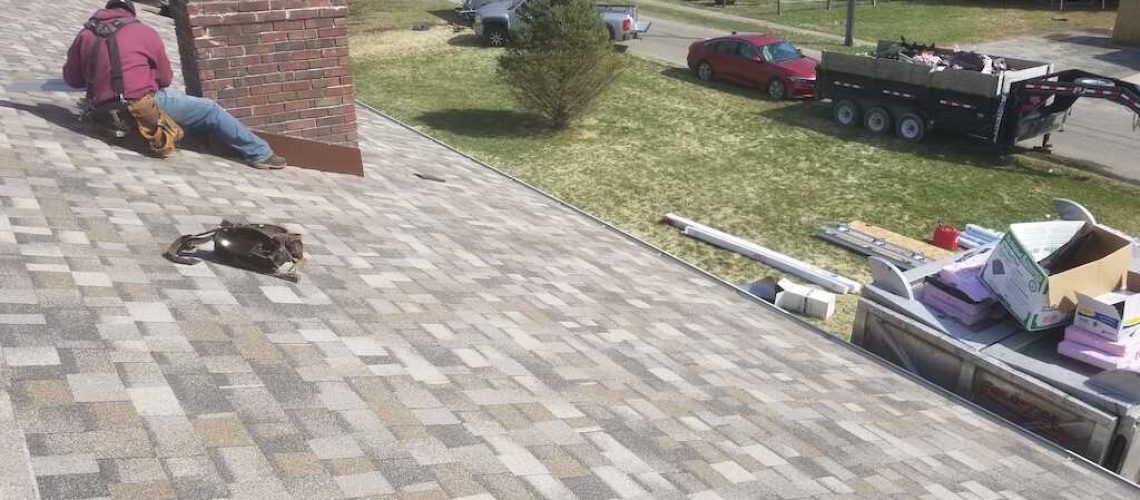The average American uses about $115.4 monthly on utility bills, with nearly half of that money going to heating and cooling. Your roof may be absorbing the sun’s heat, causing air conditioners to work overtime and sending your HVAC costs through the roof.
Luckily, you can reduce your energy bill through energy-efficient roofing. With the right roofing, you can keep your building cooler in the summer and warmer in the winter without overexerting your HVAC system. What’s more, energy-efficient roofs are the best way of going green since they help reduce your carbon footprint.
To understand more about energy-efficient roofing, our detailed guide right here has you covered.
Consider the Roof Color
The color of your roof is a critical variable in ensuring that your home is energy-efficient. The general guideline that applies when choosing your roof color is that dark hues absorb heat, while light colors reflect heat.
But choosing the right roof color isn’t nearly as straightforward. The right color for your roof is dependent on the climate in which you live. If you live in hot areas, you should consider choosing a light-colored roof over a dark-colored one. Having roofs with a white or light brown tint will make your home cooler during the hot seasons since they reflect the sun’s energy.
In case you live in more frigid climates, you will want a dark-colored roof since it absorbs enough sunshine to keep you warm during harsh winters.
Roofing Materials
Using certified roofing materials can lower your home’s cooling demand by up to 15 percent. In case you want to replace your old roofs with more energy-efficient roofing, here are the types of roofing materials you should consider.
Energy-Efficient Shingles
You can choose asphalt shingles or shake shingles as energy-efficient roof materials for your home. While shake shingles allow better air circulation in your home, asphalt shingles are low maintenance.
Metal Roofing
Cool metal roofs reflect a high percentage of the sun’s rays, decreasing your need for air-conditioning. It’s also environmentally friendly since it reduces greenhouse gas emissions.
Tile Roof
Different materials, including clay, slate, and concrete are used to create tiles. Most tile roofing materials increase heat reflectivity, making your roof more energy efficient.
Roof Coatings
They add a layer of insulation to your roof, improving the sun’s reflectivity. This can help you reduce your energy and maintenance costs.
Green Roof
An eco-friendly roof provides your home with significant thermal insulation that helps reduce energy consumption and carbon pollution.
Insulation
The quality of insulation in your attic can determine if your roof saves energy or not. A poorly insulated roof will absorb and trap heat in your attic during the hot seasons, overworking your air conditioning system. During winter, it’ll also allow cold air to flow into your house and increase heating costs.
Investing in an insulator creates a barrier that reduces heat absorption, helping you gain a more energy-efficient roof. It also helps you save a lot of money on heating and cooling costs.
Ventilation
Your roof should have ventilation to allow proper airflow to your home’s interior and exterior. If your roof doesn’t have enough airing, it can trap hot air in the upper part of your home, causing it to heat up.
This is why it is important to install vents along with the low points of your roof. It allows the inflow of cool air and the escape of rising hot air. Besides, it also reduces the need to use your HVAC system.
Benefits of Energy Efficient Roofs
Wondering why you need an energy-efficient roof? Below are the reasons why you should consider energy-efficient roofing.
Regulates Temperature
Old roofs can absorb the UV radiation and heat from the sun, increasing the temperature of your home. To stop this, you need energy-efficient roofs for your home. They prevent heat from retaining and raising the internal temperatures of your home.
Good for the Environment
When your home is too hot, you’ll need to crank up your AC to cool down. As your air conditioning operates, it releases chlorofluorocarbon or CFC that’s very damaging to the environment. With energy-efficient roofs, your home will be kept at a lower temperature, meaning less use of your AC units. This way you can protect your environment.
Extends the Lifespan of the Roof
Some roofs absorb too much heat that causes them to damage fast. If you want more durable roofs, you should consider investing in energy-efficient roofs. They reflect heat rather than absorb it, meaning your roof will last longer. What’s more, you can add a UV-resistant coating to the roof to further slow down the aging process.
Lowers Energy Costs
Apart from protecting you and your family from bad weather, energy-efficient roofs can help you conserve energy. It helps maintain appropriate energy levels throughout the seasons, ensuring your HVAC system doesn’t overwork. This will help lower your utility bills.
Provide Tax Credits
The federal government offers tax rebates to businesses and homeowners that own energy-efficient products in your home, including roofs. It’s part of a program to decrease the nationwide environmental impact.
You can also benefit from the tax discounts by earning back about 10% of the cost of your roof installation. Consult with your professional roofing contractor to understand the tax credits and benefits you’re eligible for with various roofing materials.
Adds to the Value of Your Home
Having an energy-efficient roof reduces the use of gas, oil, and electricity each month. This can increase your home’s worth. When buyers are looking to buy your home, they won’t be able to pass up the opportunity to own it. They’re also more likely to pay more for your house.
Hire Professional Roofing Contractors for Energy-Efficient Roofing
Looking for certified contractors to install your roofing? Look no further than Freeman Exteriors. Our expert roofing contractors will help you install quality roofs that best fit your home. Get a quick quote for energy-efficient roofing.




